Industry Sponsored Projects: Collaborative Engagements between Industry Professionals and the School of Design & Engineering
Table of Contents
Table of Contents
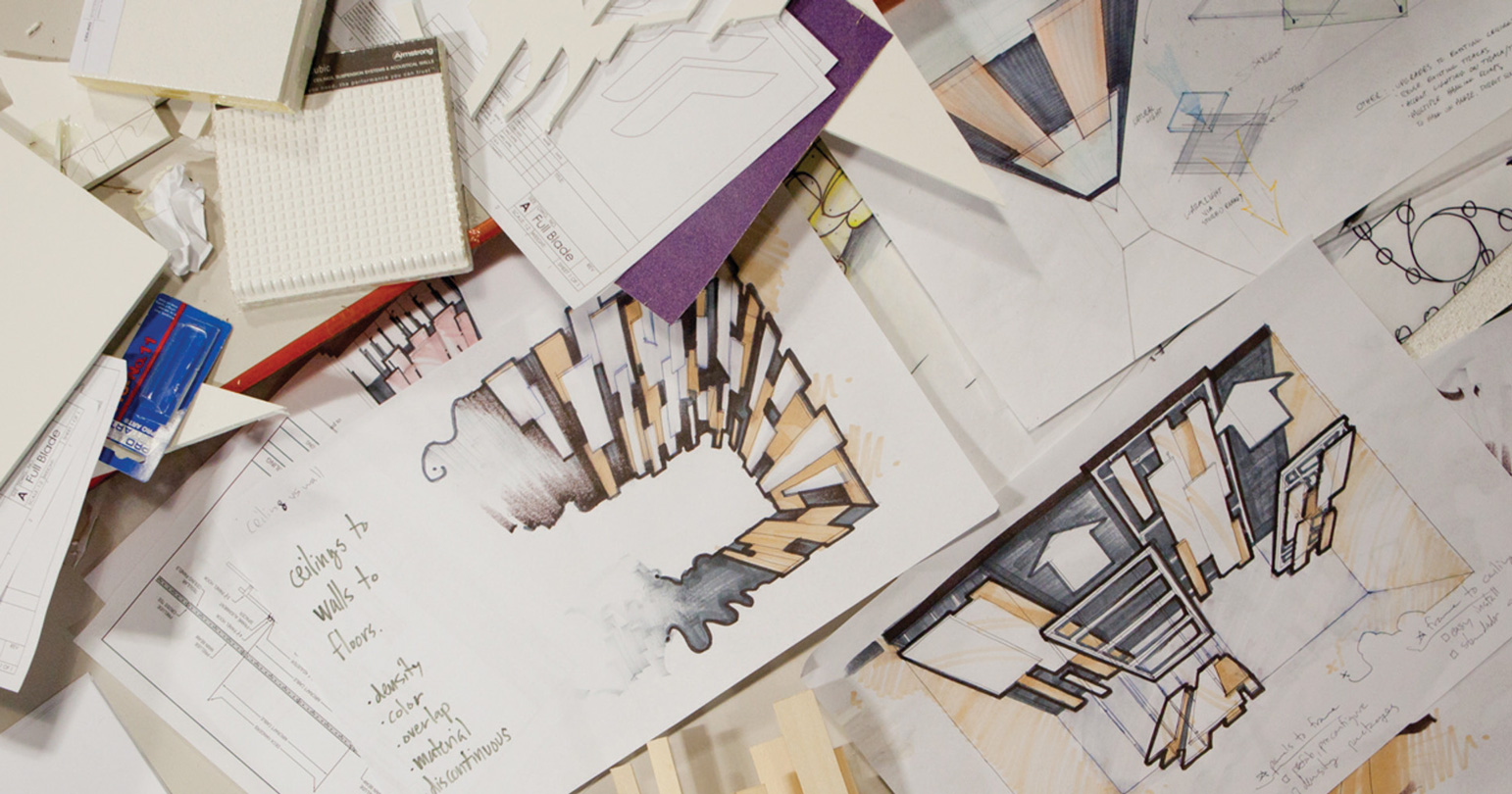
What is an “Industry Sponsored Project”?
An Industry Sponsored Project is a collaborative engagement between an internal or external industry partner (the “Sponsor”) and one or more academic units of Thomas Jefferson University (the “Project Team”).
In the context of Jefferson’s School of Design & Engineering, the Sponsor is typically an individual or company who enlists the skills of Jefferson’s Faculty and Students to explore potential solutions to a problem, and deliver the proposed solutions in the form of concepts for new products or services.
Why do Industry Partners Collaborate with Jefferson?
Our partners initiate projects to augment their internal team and explore solutions to real-world business problems in a dynamic, fast-paced educational environment.
Some scenarios that spark industry-sponsored projects:
“We need help exploring some potential solutions to this real problem we/our customers are facing”
“We need help validating some potential solutions that we’ve come up with to address this real problem we’re facing”
“We need help confirming this proposed solution will solve this real problem we’re facing in the most efficient way possible”
Based on the nature of the problem our partner is facing, and the type of solutions they hope to explore, we discuss potential project paths to pursue and align the appropriate faculty and students to form the Project Team.
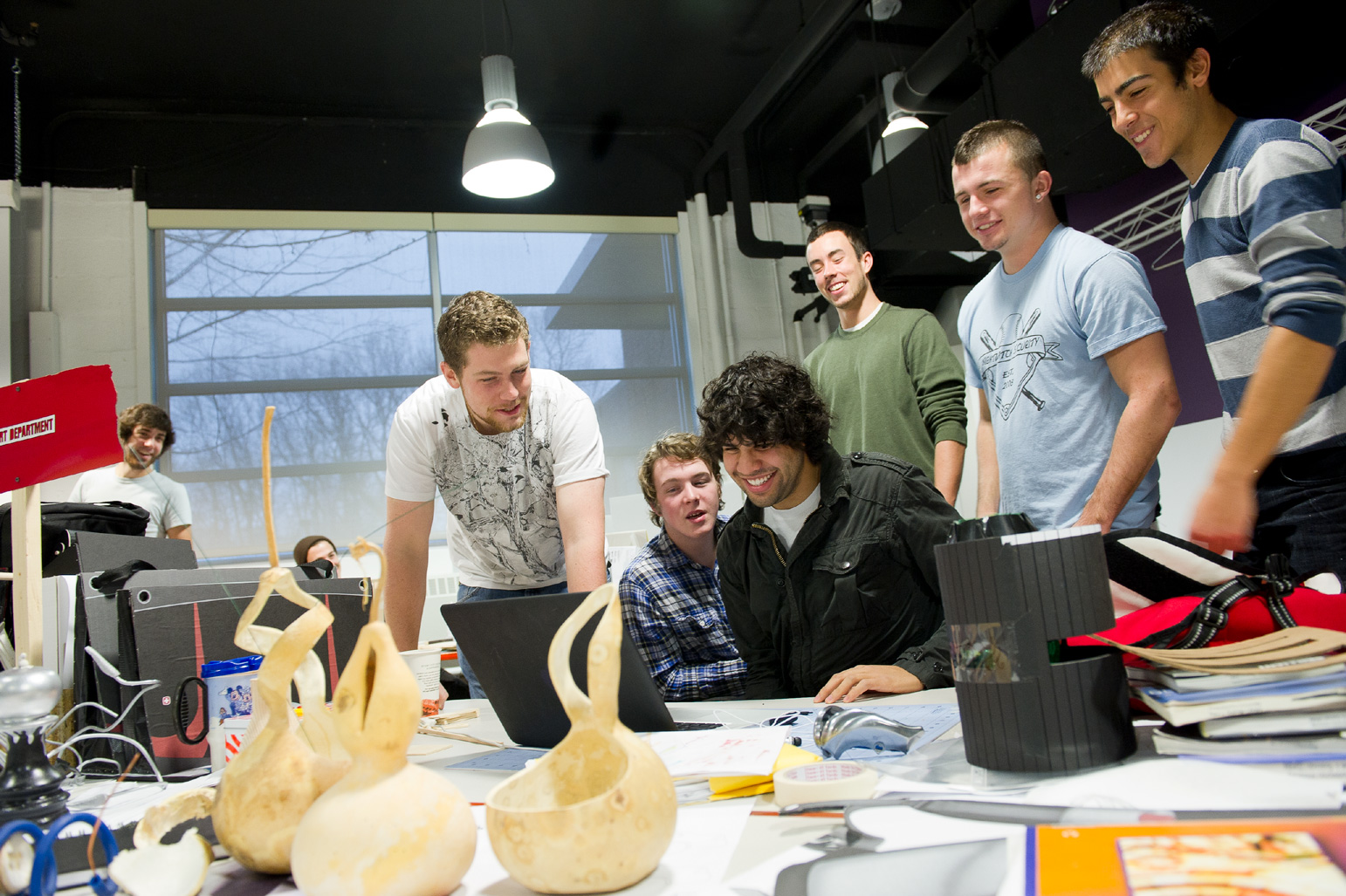
What Expertise Does Jefferson Bring to the Table?
The programs within Jefferson’s School of Design & Engineering are:
- Digital Design
- Animation & Digital Media
- Web Design & Development
- User Experience & Interaction Design
- Textile & Fashion Design
- Fashion Design / Fashion Design Management
- Textile Design
- Textile Product Science
- Textile Engineering / Textile Engineering & Sciences
- Engineering
- Engineering & Mechanical Engineering
- Visual & Graphic Design
- Visual Communication Design
- Surface Imaging
- Product & System Design
- Industrial Design
- Design for Health
- Biopharmaceutical Process Development
- Health Communication Design
Faculty and Students from one or more of these programs can be deployed on a project to best meet the project requirements of the Sponsor and academic objectives of the University.
What are the Main Components of an Industry-Sponsored Project?
Some of the building blocks necessary to executing these projects are:
- Scope of Work
- A concise, clearly defined scope of work is necessary so the Sponsor is clear on the objectives of the project, and the Project Team is clear on what is being asked of them.
- Schedule & Milestones
- A definite start and end date, with predetermined milestones along the way, is crucial to ensuring the success of any engagement.
- Final Deliverables
- Clearly defined final deliverables provide a clear target for the Sponsor and Project team to work towards.
- Project Team
- A carefully selected project team comprised of the appropriate faculty and students is key to a project’s success.
- Project Budget
- In order to compensate our faculty members and create the necessary deliverables throughout a project, Sponsors support the project team through direct funding or through grants.
- Educational Outcomes
- All projects must align with the learning objectives of Jefferson’s academic units and contribute to the ongoing education of our students
- Project Agreement
- A formal agreement must be authorized by all parties to protect any proprietary information shared and to ensure the Project Team is able to disclose their participation in a project within their resumes and portfolios.

Are These Projects Done Inside or Outside of Regular Classwork?
Industry sponsored projects can be executed within a specific course or courses, or they can be an extracurricular activity outside of class time. Most projects tend to work better within the classroom setting, where a dedicated team of faculty and students integrates the project into their ongoing course work. However, if a project demands a specific set of skills or warrants hiring specific students as paid interns, an extracurricular setting may be preferred. Here is some more information on what type of projects are more suitable for each setting:
- In-Course
- In this placement, the project is fully integrated into the curriculum of one or more courses during the Fall, Sprint or Summer Semesters.
- This placement is ideal when:
- the success of the project is facilitated by the educational objectives of the course, and/or
- when a broader exploration by many students is preferred to a more focused exploration by a small project team.
- Extracurricular
- In this alternate placement, the project is executed outside of the regular course as an extracurricular activity.
- This placement is ideal when the scope of work and final deliverables are fully defined but does not fully align with any particular course or curriculum.
- Students are often compensated for these projects which more closely mimics a professional client/vendor relationship than a college course.
How are the Project Teams Structured?
Based on the project requirements, a team of faculty members and students is carefully selected and staffed. For in-course projects, 1-2 faculty members may oversee the work of multiple student teams from a single discipline; or, if the project requires a more diverse team, 3-4 faculty members may oversee the work of multiple interdisciplinary student teams from two or more programs. For extracurricular projects, a small, hand-selected student team typically works under 1-2 faculty members. Here’s an outline of each common project format:
- Single-Discipline
- For Industry Projects with very focused, specific requirements, Instructors and Students from the appropriate discipline will be assigned to execute the project in its entirety.
- Multi-Discipline
- If the scope is more complex and multifaceted, project teams are comprised of Instructors and Students from multiple disciplines.
- They can work simultaneously in a collaborative nature, or each discipline can be assigned to separate phases or components of the project as necessary.
- Faculty-Led Small Group
- Depending on the scope and whether or not the project coincides with a specific course, the project team may be comprised of a hand-selected group of Instructors and Students, either from a single discipline or across multiple.
- Faculty-Only
- If an Industry Project requires a particular skill that is not as common at the collegiate student level, the Industry Partner can work directly with one or more Faculty members.
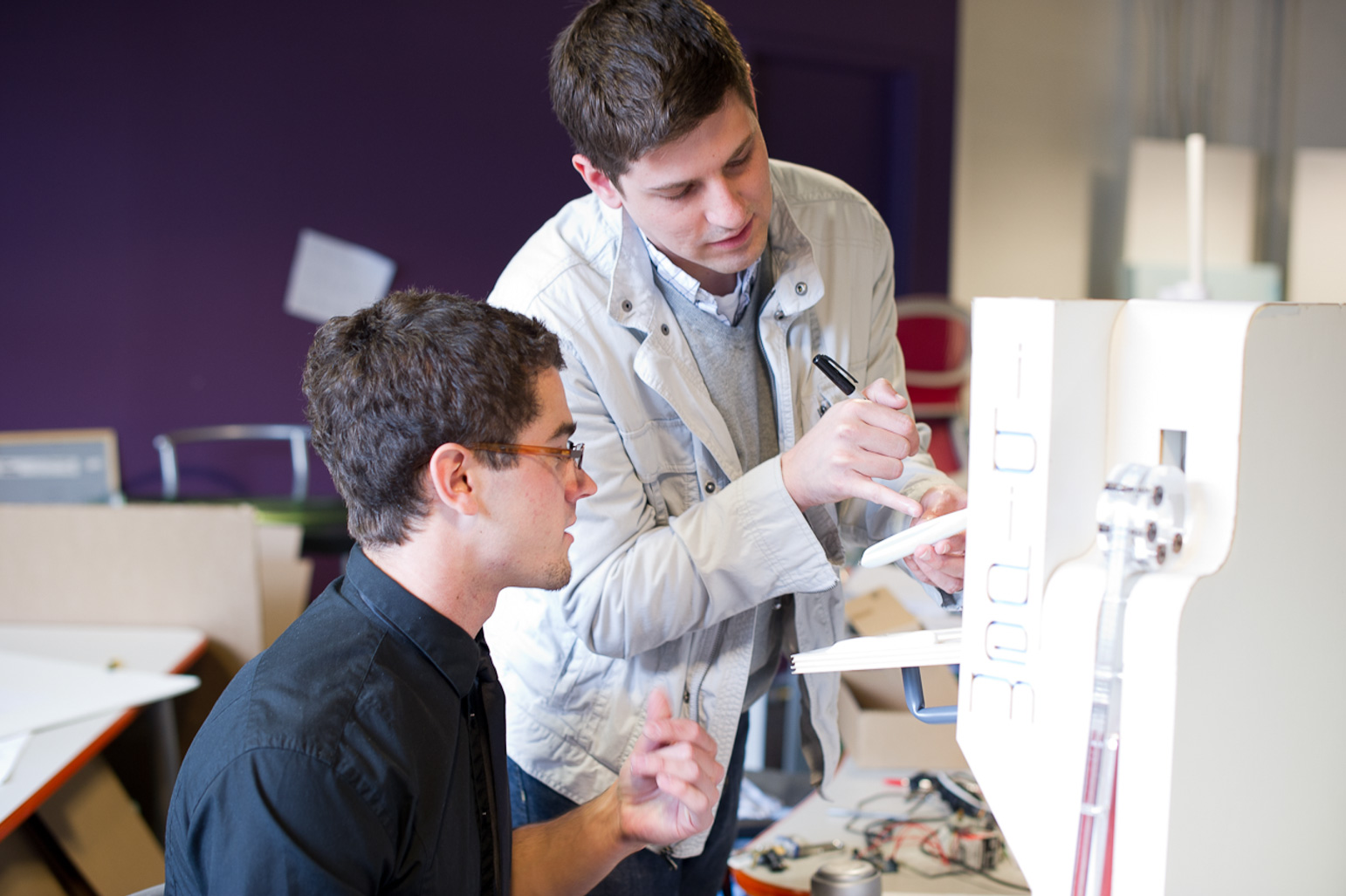
How Long Do These Projects Take to Execute?
Project timelines can range from a 1-2-week Sprint to a 12-18-month phased engagement, depending on the scope of work and the sponsor’s desired outcomes. The most common project timelines are:
- Sprint
- Project Teams move from ideation and sketching, to mock-ups and prototypes, to a critique from the industry partner, to final presentations in 1-2 weeks.
- 4-6-Week
- If the high-risk intensity of a Sprint isn’t ideal for the given scope of work, the project schedule can be extended over the course of 4-6 weeks.
- Full Semester
- Projects with longer development cycles or more complex scopes of work may require a full semester of attention.
- Phased
- Projects that exceed the length of a semester are executed in phases to break the scope of work into manageable components, and to ensure continuity from one phase and project team to the next.
To align with Jefferson’s academic calendar, the timelines above are aligned to one of the following three annual segments:
- Fall Semester (August-December)
- Spring Semester (January-May)
- Summer Semester (May-August)
How are Project Schedules and Deliverables Managed?
We utilize milestone-based scheduling to break projects into more-manageable phases, each tied to specific measurable outcomes. Throughout the length of the project, several milestones are established at predetermined intervals, where the sponsor will have the opportunity to interact directly with the project team and provide input to influence what they do next. For example, the schedule for a six-week project might look something like:
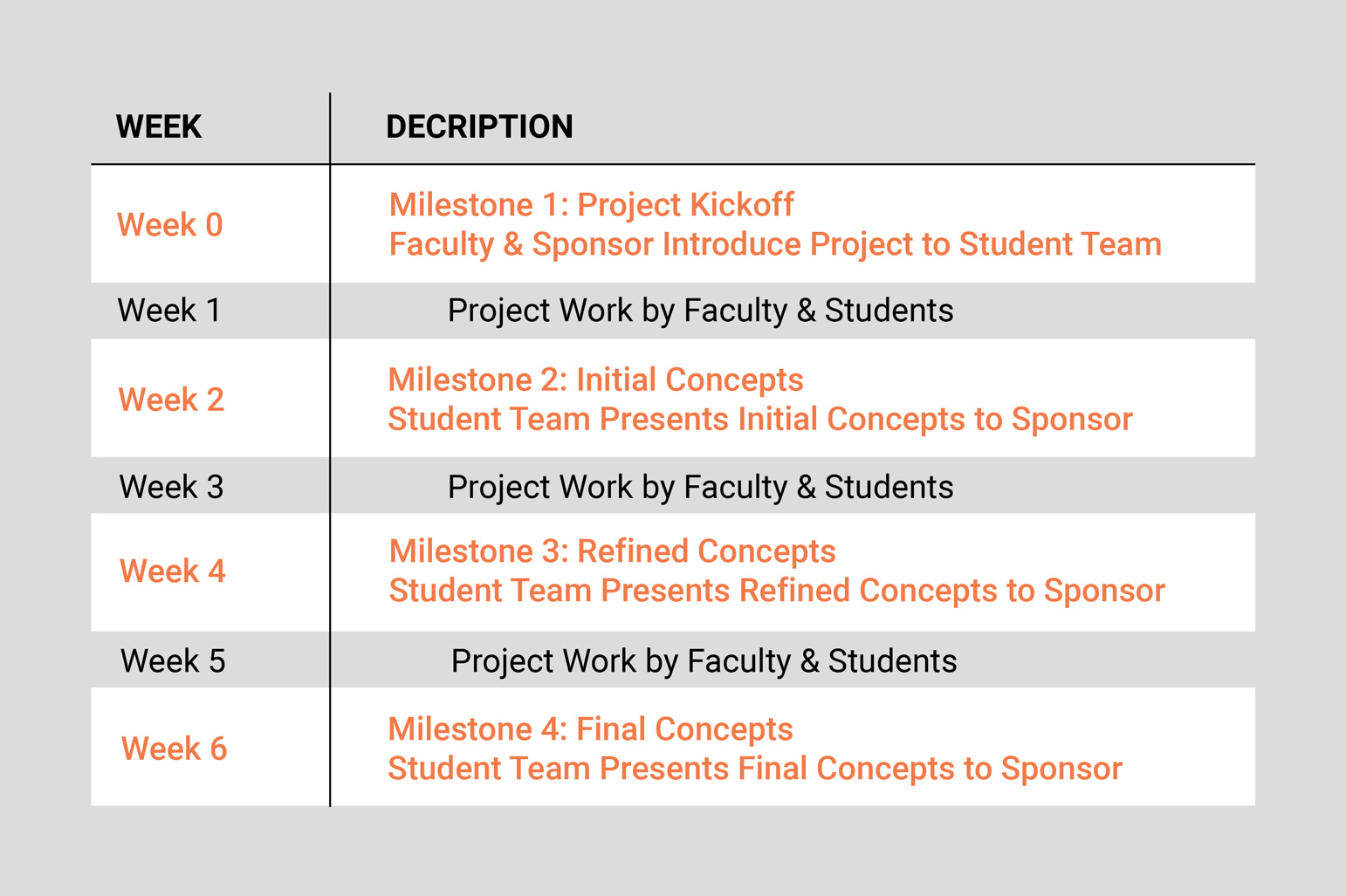
Milestone-based scheduling ensures that the Sponsor has adequate influence on the project work without overly investing their time or impeding on the academic objectives of the participating faculty and students.
Are There Any Project Opportunities which Jefferson would not Pursue?
We love doing these projects and they are instrumental in preparing our students to face the real-world challenges they will encounter after graduation. However, we cannot accept every opportunity brought to us, and certain criteria must be met before an opportunity is approved.
- Alternative to Professional Services
- Industry sponsored projects are not a direct alternative to hiring employees or contracting professionals to achieve the same scope of work.
- They are a collaborative and educational engagement in which the objective is to enhance the academic experience of our students and provide valuable actionable insights for the sponsors, not solely to produce a specific result.
- Sufficient Educational Value
- A proposed project must align with the academic objectives of the University and generate educational value for the participating students in order to be considered.
- Therefore, opportunities which do not rely on exploring various solutions to a problem in an educational setting cannot support an industry sponsored project.
- Availability of Funding
- Just like projects in the professional world, industry sponsored projects require sufficient funding to compensate the participating faculty and to create the necessary project deliverables.
- Project budgets differ greatly depending on the complexity of the scope, disciplines required, and how much time is needed. Here are some example budget ranges for different types of common projects, and we work with potential sponsors to establish fair and accurate budgets per the specific requirements.
- Adequately Defined Scope of Work & Deliverables
- To yield maximum value and result in optimal outcomes, a clearly defined scope of work and list of desired final deliverables are essential.
- This gives the project team a clear target to work towards, and ensures that the sponsor is aligned on what the goals of the project are before any work begins.
What Companies have Sponsored Past Projects?
Jefferson collaborates with both external and internal entities in executing Industry-Sponsored Projects. External Sponsors are third-party organizations that have identified opportunities to develop solutions to real business problems by collaborating with Jefferson. Internal Sponsors are the various Colleges, Schools and Departments of Jefferson University outside of the School of Design and Engineering who identified similar opportunities to develop solutions to real-world problems.
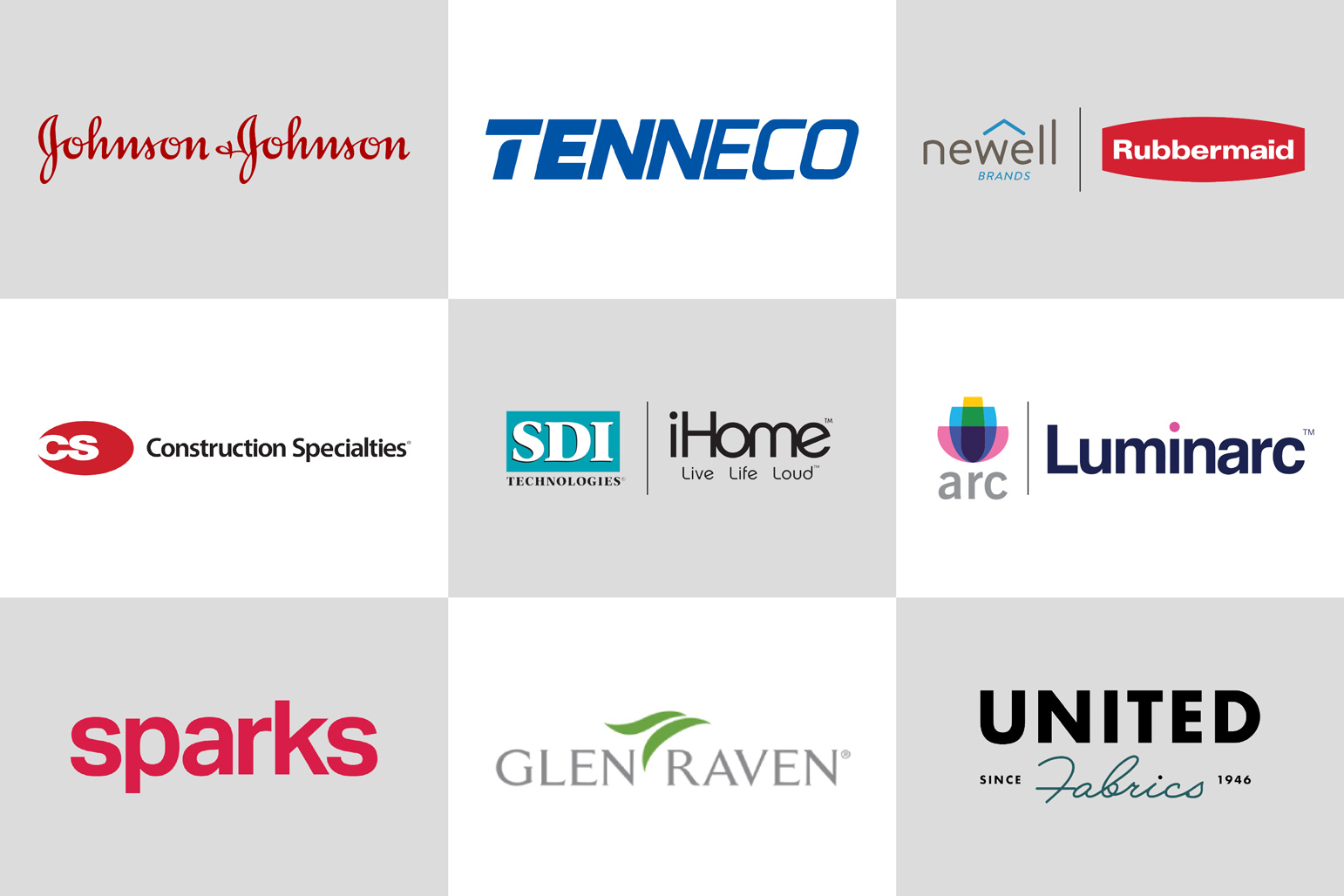
External Sponsors
We partner with established companies to create innovation in their businesses, and to create value through business impact and educational outcomes
Examples:
- Johnson & Johnson
- Tenneco (formerly Federal-Mogul)
- NewellBrands / Rubbermaid
- Construction Specialties
- SDI Technologies / iHome
- Luminarc
- Sparks Marketing Corp.
- Glen Raven
- United Fabrics
Internal Sponsors
We also partner with other extensions of Jefferson University and the Sidney Kimmel medical college to explore solutions to healthcare related problems
Examples:
- Center for Autism & Neurodiversity
- Department of Neurology
- Department of Surgery
- Jefferson Health – Abington
- 1889 Jefferson Center for Population Health
Project Example 1: Tenneco Interdisciplinary Product Development Competition
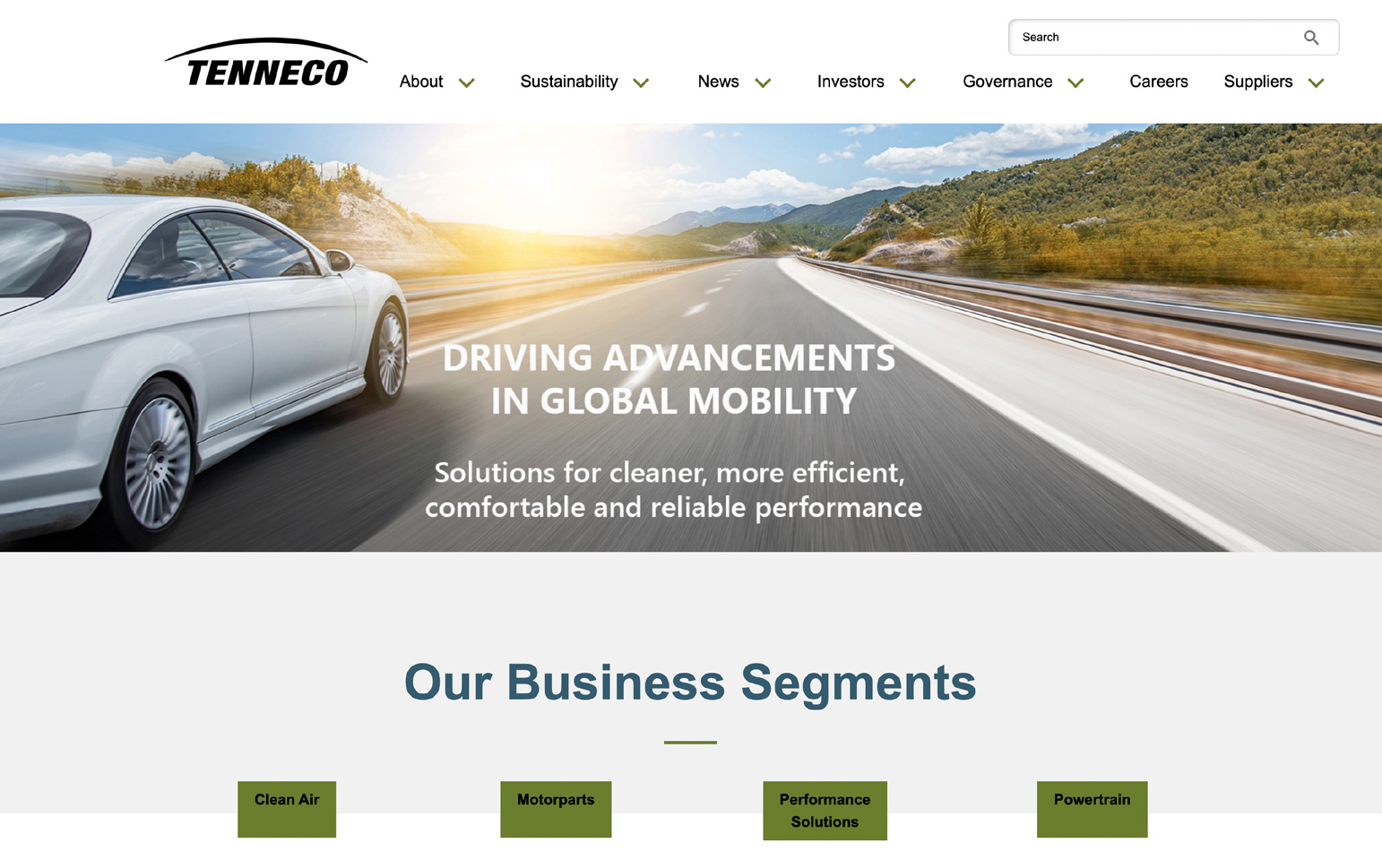
Sponsor: Tenneco (formerly Federal-Mogul)
Timeline: Full Semester
Format: Multi-Disciplinary (Industrial Design, Engineering, Business)
About the Sponsor: Tenneco´s Powertrain business group designs, develops and manufactures original equipment components and innovative technologies that help engine designers meet increasingly demanding customer, regulatory and market requirements in every region of the world.
About the Project: Interdisciplinary teams consisting of students from the Industrial Design, Engineering and Business programs are assigned an existing material which Tenneco designed to serve a specific function for a specific application. Each student team must identify an alternate product application for their assigned material based on the inherent functional and aesthetic characteristics. The final proposals submitted to Tenneco include a full business plan describing the manufacturing, sale and end use of their proposed product or system concept. A winner is chosen based on their ability to repackage Tenneco’s material in a completely new application which solves a real problem and generates real value for a specific audience. The winning team is awarded a cash prize and is given the opportunity to present their concept to Tenneco’s Executive Team.
About the Outcomes: Tenneco has continued this project for 10+ consecutive years now due to the value generated by the student’s work and the way in which the project impacts the way in which Tenneco identifies business opportunities and develops products. Alumni of Jefferson often are recruited by Tenneco because of their work on this project and, even when students aren’t hired directly, the project has a substantial impact on their ability to be hired elsewhere. As the Dean of the School of Design & Engineering, Mike Leonard, describes it: This project is ‘resume gold’!
Project Example 2: Annual Industrial Design Sprint Project
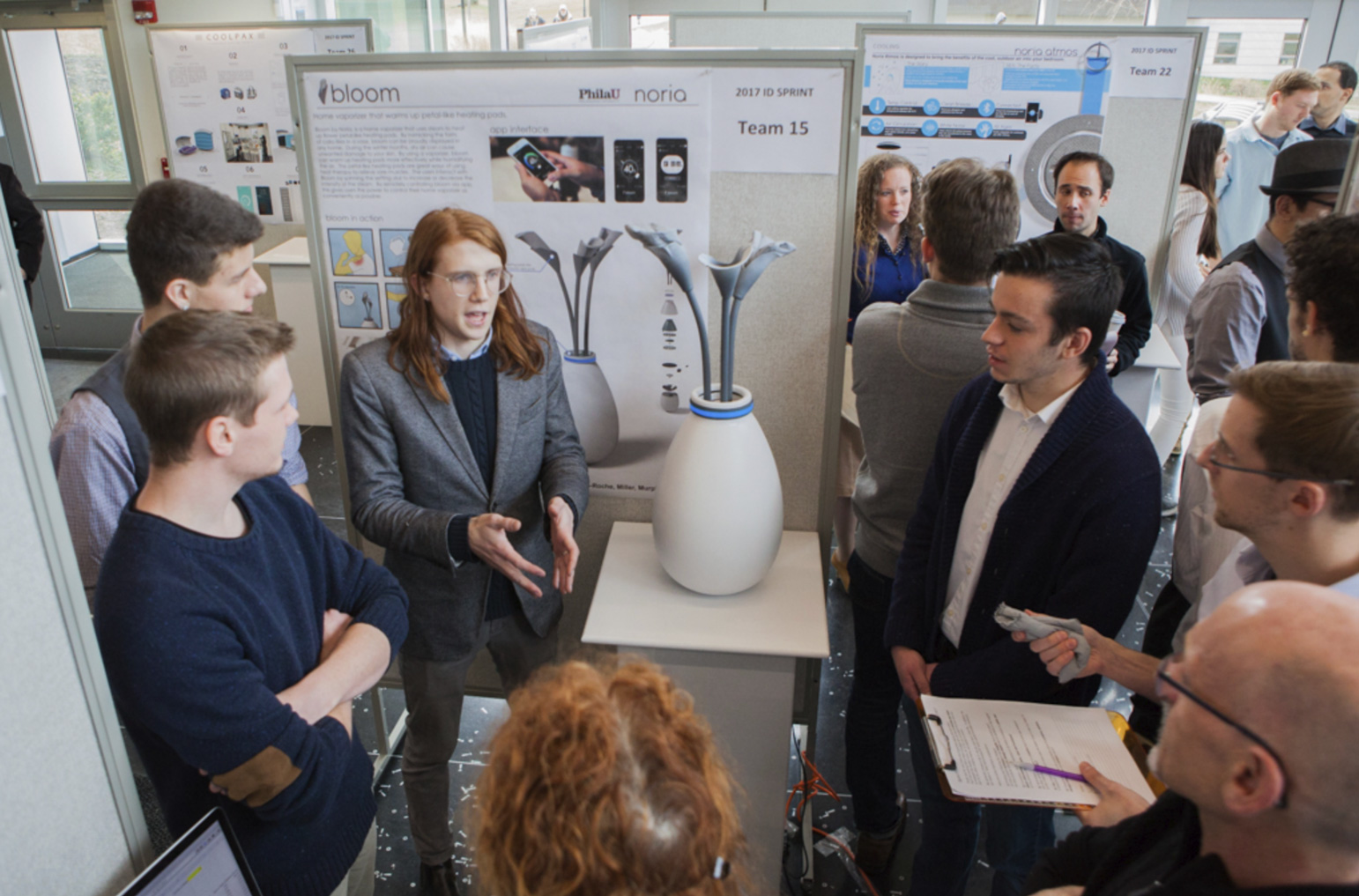
Sponsor: Varies by Year*
*Some examples of ID Sprint Project Sponsors:
- NewellBrands / Rubbermaid
- SDI Technologies / iHome
- Sparks Marketing Corp.
Timeline: One-Week Sprint
Format: Single-Discipline (Industrial Design)
About the Sponsor: The annual ID Sprint Project is sponsored by a different organization each year. Sponsors of this project are interested in a dynamic, fast-paced product development cycle, where multiple student teams propose solutions to a common problem in the form of product concepts or system concepts. The fast-paced multi-team format allows the Sponsor to assess a number of potential solutions to a real-world problem which they can utilize internally to influence the development of new products and systems.
About the Project: Student teams of Industrial Designers from all levels of the program – Freshmen up to Second-Year Grads – collaborate to develop and present a solution in the form of product concepts or system concepts within an incredibly short 1-week time frame. Junior Industrial Designers assume the role of ‘Team Manager’ and lead their respective team to respond to the project brief in just 7 days. The Sponsor and Jefferson Faculty may kick off the project on a Tuesday, the initial concepts would be presented and reviewed by Friday and the final product proposals would be delivered on the following Tuesday. This is why ‘Sprint’ is an appropriate name for these engagements!
About the Outcomes: The annual ID Sprint Project has become a staple of the Industrial Design Program, the School of Design and Engineering and Jefferson’s East Falls Campus. Sponsors enjoy the exciting, fast-paced environment and the unique concepts delivered by the student teams. Concepts from the ID Sprint Project, as well as from other industry sponsored projects, have gone on to enter production or greatly influence future products. Even when the final deliverables don’t go on to become purchasable products, they generate substantial value for students on their resumes and in their portfolios.
Project Example 3: 1889 Jefferson Center for Population Health Visual Communication Design
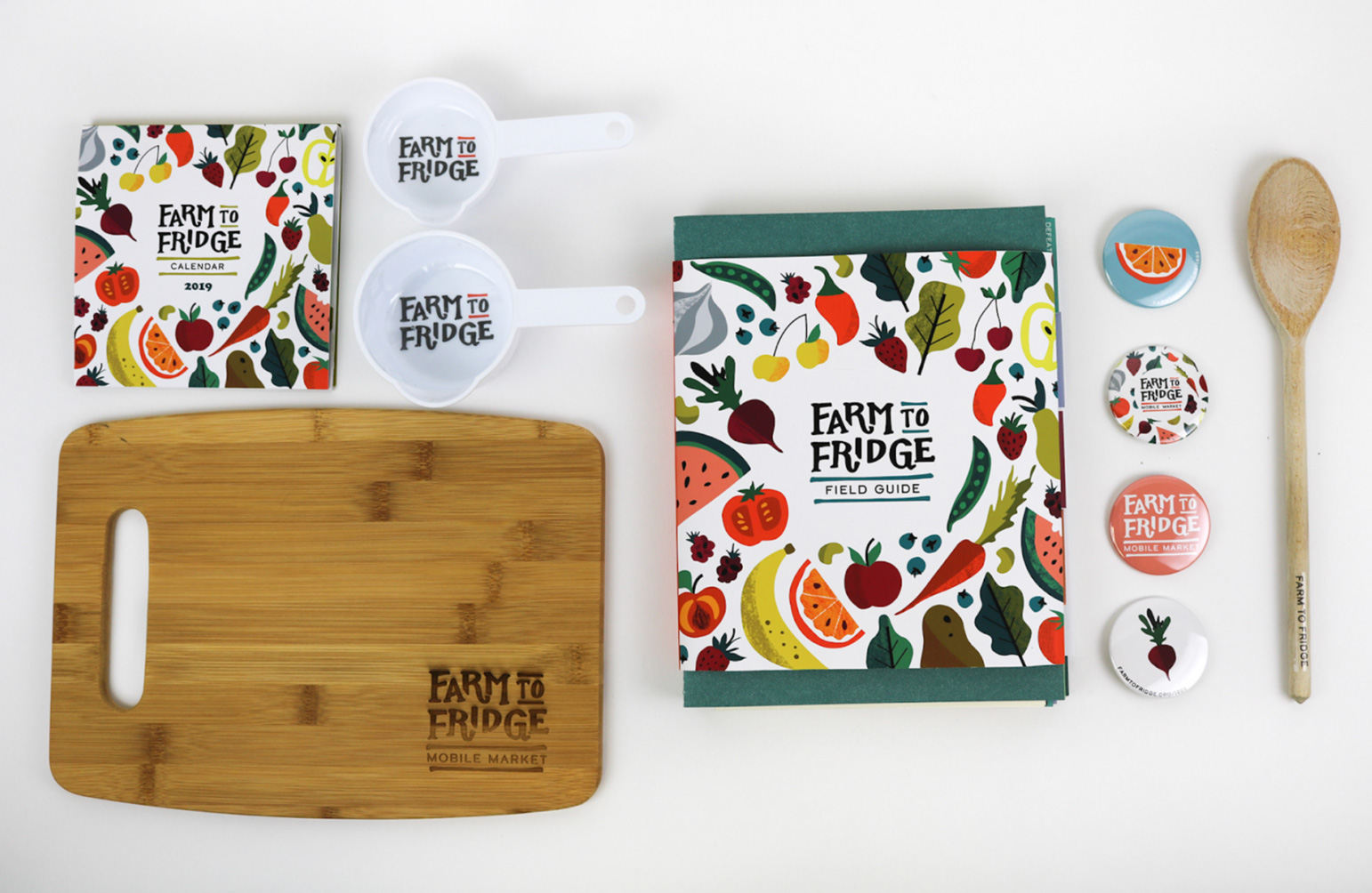
Sponsor: 1889 Jefferson Center for Population Health
Timeline: Full Semester
Format: Multi-Disciplinary (Experiential Design, Occupational Therapy)
About the Sponsor: The 1889 Jefferson Center for Population Health was founded as a collaborative research and resource Center focused on population health and disease prevention to benefit the citizens living in Cambria and Somerset Counties. 1889 Foundation made a major gift to the College of Population Health of Thomas Jefferson University in Philadelphia to establish the Center.
About the Project: The 1889 Jefferson Center for Population Health approached us saying that the diabetes epidemic is more prevalent than ever before in Western Pennsylvania, specifically Cambria and Somerset counties. The project team created a system to help empower these residents to improve their quality of life through educating about healthy eating habits, collaborating with local farmers, and creating a sense of community.
About the Outcomes: The area is rich in agriculture but has many food deserts, so we proposed Farm to Fridge—a mobile produce truck that takes produce from farms in the area and brings it straight to the people of Cambria and Somerset counties. The deliverables include a monthly publication that helps residents with portion control and healthy recipes. Residents also receive a starter kit with tools for cooking and a calendar that houses information about fresh food. Residents can connect with the mobile market through an app that notifies them when the truck is coming and what is in it that week.
Project Example 4: Sunbrella®: What’s Next? Textile Design Competition
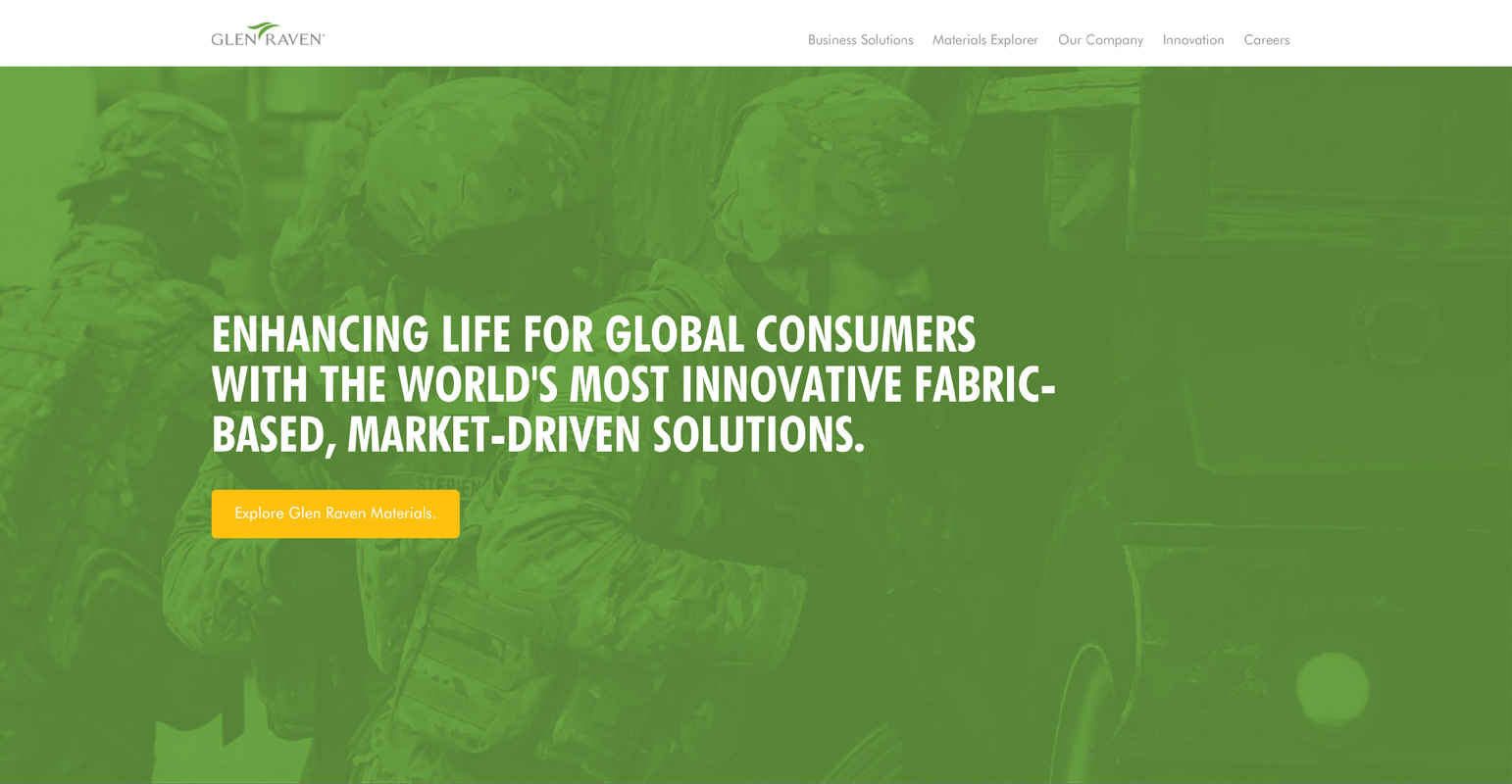
Sponsor: Glen Raven
Timeline: Full Semester, offered in both Fall 2020 and Spring 2021
Format: Primary Discipline—Textile Design BS and MS. (Project open to all
students enrolled in certain Textile Design courses. In the 2020-2021 project,
students in Industrial Design, Interior Design and Textile Product Science
participated, in addition to Textile Design BS and MS students.)
About the Sponsor: Glen Raven is a market-driven company creating innovative textile solutions in their Custom Fabrics, Technical Fabrics and Trivantage (awning, marine and upholstery markets) divisions. Their mission is stated as “enhancing life for global consumers with the world’s most innovative fabric-based, market-driven solutions”.
About the Project: Students work individually to create new and innovative fabrics for the Sunbrella® customer base in the upholstery or window treatment markets, utilizing only Sunbrella® branded yarns. Students may use any combination of hand and mechanized textile manufacturing and finishing processes, without regard to commercialization or cost, in creation of up to 5 entries per student. Aesthetic considerations in conjunction with inherent fiber properties and resultant functional properties are of utmost importance. Glen Raven design representatives conduct individual midterm reviews, to assist students with selecting and advancing their design solutions.
About the Outcomes: Glen Raven has partnered with the Textile Design programs on this project for 9 years; with the project traditionally held every other year. The 4th edition was completed in Spring 2021. The final textiles answering the question “Sunbrella®–What’s Next?” are matted and showcased in an exhibition to which Glen Raven Design and Marketing leaders, as well as select Glen Raven customers, are invited as judges. Jurors review the entries and accompanying design statements to select First, Second and Third Place Awards, and possible Awards of Merit based on innovation, creativity and product development opportunities. In addition to cash prizes, students have great networking opportunities with Glen Raven as well as their customers. This project has led directly to full time careers as well as exciting internships, with both Glen Raven and their customers recruiting our students/alumni.
Project Example 5: United Fabrics Branded Sample Kit Concept Design

Sponsor: United Fabrics Inc.
Timeline: 6-Week Project
Format: Multi-Disciplinary (Industrial Design & Visual Communication Design)
About the Sponsor: With over 75 years in the fabric business, we have built our reputation on industry-leading service, offering the perfect solution with every swatch. Our dedicated team takes pride in the customer experience from the first sample request to seeing a client’s creative vision come to life.
About the Project: United Fabrics, Inc. initiated this collaboration with the Industrial Design Junior Studio in order to create an exciting new fabric sample kit to showcase their product offerings. United had just gone through a rebranding, so the sample kit needed to align with their fresh new brand, as well as showcase their products to architects and designers in a compelling way. Students from the Visual Design Communication program also joined the project team to assess the new branding from a graphic design perspective, and to provide valuable insight to the Industrial Designers to integrate branded graphics into their sample kit concepts.
About the Outcomes: The United team was blown away by the concepts and prototypes delivered by the project team, and the designs directly influenced the sample kit which United is fabricating and distributing to potential customers today. The interdisciplinary project team with students from both Industrial Design and Visual Communication Design provided a robust learning experience for the participants, closely mimicking a professional project where multiple business units come together to create a compelling new concept.


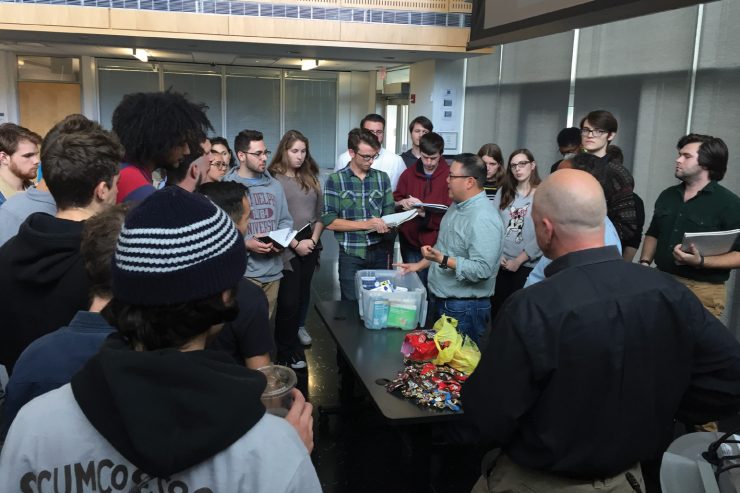

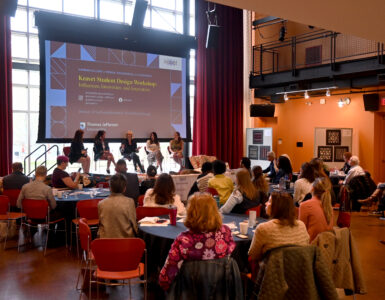

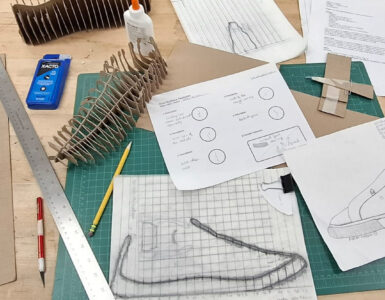

Add comment